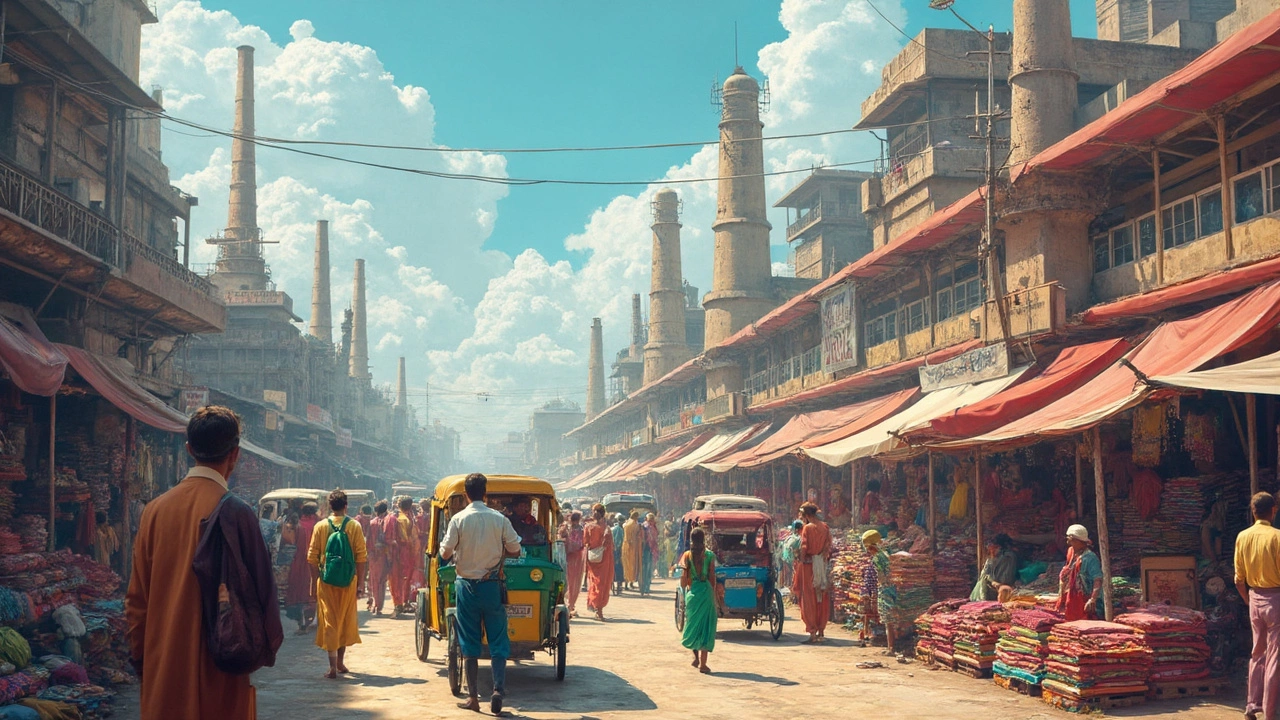Indian Fabric Industry: Trends, Hubs, and Opportunities
India’s fabric scene is buzzing like never before. Whether you’re a buyer, a maker, or just curious, you’ll find that the country’s textile base is a mix of old‑world skill and new‑age tech. In this guide we’ll break down where the biggest factories are, what’s driving demand, and how you can tap into the export wave.
Key Manufacturing Hubs
When you think of Indian textiles, cities like Surat, Tirupur, and Ludhiana pop up first. Surat, known as the "silk city," churns out millions of meters of synthetic silk and polyester each year. Its quick‑turn factories make it a favorite for fast‑fashion brands that need short lead times. Tirupur, in Tamil Nadu, is the cotton powerhouse. The town’s knitwear units supply everything from T‑shirts to sportswear for global brands. Ludhiana in Punjab specializes in wool and blended fabrics; its artisans combine traditional weaving with modern looms to create high‑quality outerwear.
Beyond the big three, smaller clusters in Gujarat and West Bengal are gaining traction. Gujarat’s handloom cooperatives are exporting hand‑crafted cotton fabrics, while West Bengal’s Bengal Silk industry is seeing a revival thanks to government subsidies and design‑focused training programs. If you’re scouting suppliers, these regions offer competitive pricing and a strong focus on quality.
Growth Drivers and Export Outlook
What’s fueling the surge? First, domestic demand. Rising incomes and a youthful population are pushing more people to buy branded clothing, which in turn raises fabric orders. Second, the Make in India push has streamlined customs, cut tariffs, and offered credit lines for textile firms. This has encouraged manufacturers to upgrade equipment and adopt sustainable practices.
Export numbers back up the hype. In the last fiscal year, India shipped over $30 billion worth of fabrics, climbing 12% from the previous year. The top markets remain the US, EU, and the Middle East, with cotton and blended fabrics leading the pack. Sustainable fabrics, especially organic cotton and recycled polyester, are seeing a premium price in Europe, so factories that can certify eco‑processes are reaping higher margins.
Technology is another game‑changer. Digital printing, AI‑driven quality checks, and automated cutting reduce waste and speed up production. Small‑scale units are now able to compete with large mills because they can switch designs on the fly without massive inventory.
If you want to enter the Indian fabric market, start by mapping your product to the right hub. For synthetic blends, Surat offers speed; for premium cotton, look to Tirupur; for specialty wool, Ludhiana is the go‑to. Reach out to local trade bodies like the Textile Ministry’s Center for Export Promotion; they can connect you with vetted suppliers and guide you through certification.
Bottom line: the Indian fabric industry is a living, expanding ecosystem. With the right partner and a clear view of market trends, you can tap into a supply chain that’s both cost‑effective and increasingly sustainable.

Fabric Capital of India: Where the Thread Leads the Way
Wondering which city wears the crown as India's fabric capital? This article cuts straight to the chase and unpacks why Surat stands tall in the world of textiles. You'll discover its massive influence on India's fabric production, what makes it the go-to spot for manufacturers, and how it keeps evolving with the times. Dive in for facts, quick tips, and the kind of info that'll come in handy if you're eyeing this buzzing textile hub. Plain talk, no fluff.
Read More